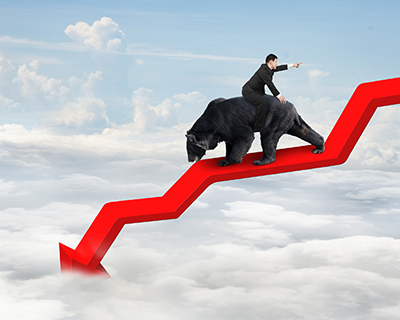The U.S. stock market dropped sharply In September, and the major stock indexes re-entered bear market territory. In this type of market, it’s easy for investors to give in to their fears and sell at the worst possible time. A review of the history of bear markets makes it easier to keep to your strategy and avoid losing money in the markets.
A bear market is defined as a 20% or greater decline in one of the major stock market indexes, usually using the S&P 500; as of September 27, the S&P 500 had dropped 25% from the high set at the start of 2022.

Bear markets are a regular part of the stock market cycle. Prior to this second 2022 bear, there have been 28 bear markets, followed by 27 bull markets, since 1928. I am confident that history will not break the cycle of bulls following bears.
From the bull market peak to the final bottom, the average bear market declined for 289 days, or 9.6 months. But the range that factors into this average is tremendous, from 33 days in 2020 to 929 days following the bursting of the dotcom bubble in 2000. As of publishing time, it has been 272 days since the market peaked on January 4, 2022.
Bull markets last an average of 2.7 years, which is calculated from the bottom of the previous bear market until the next market peak. Add the two together, and you get, on average, a bear market every 3.6 years. However, the time between bear markets has averaged 5.4 years since World War II.
The 2009 to 2020 bull market lasted one month short of eleven years. This 2022 bear market means we’ve seen two in three years, two this year and on the one in 20202. It is impossible to time the tops and bottoms accurately.
The median bear market decline has been 33.5%. At 25% down, the current bear market needs to fall another 11% from here to hit that average. However, that 33.5% number is the median, which means half of the bear markets declined less than that, and half fell further.
No matter the length or depth of the drop of historical bear markets, stock prices always recovered and set new highs.
My Dividend Hunter strategy uses high-yield investments to earn a stable income through the ups-and-downs of the market. Regularly added investments and dividend reinvestment will rapidly grow your investment income. Bear markets can be easy to get through—with a regular investment strategy (which includes dividend reinvestment), you buy fewer shares when prices are high and more shares when stocks are down.
As a result, after a couple of bull and bear market swings, your average cost per share will be less than the average trading price over that period. It all leads to a stable and growing income. You will also see your wealth increase with each bear market and recovery.





